Grave of the Fireflies: The haunting relevance of Studio Ghibli's darkest film
- Published
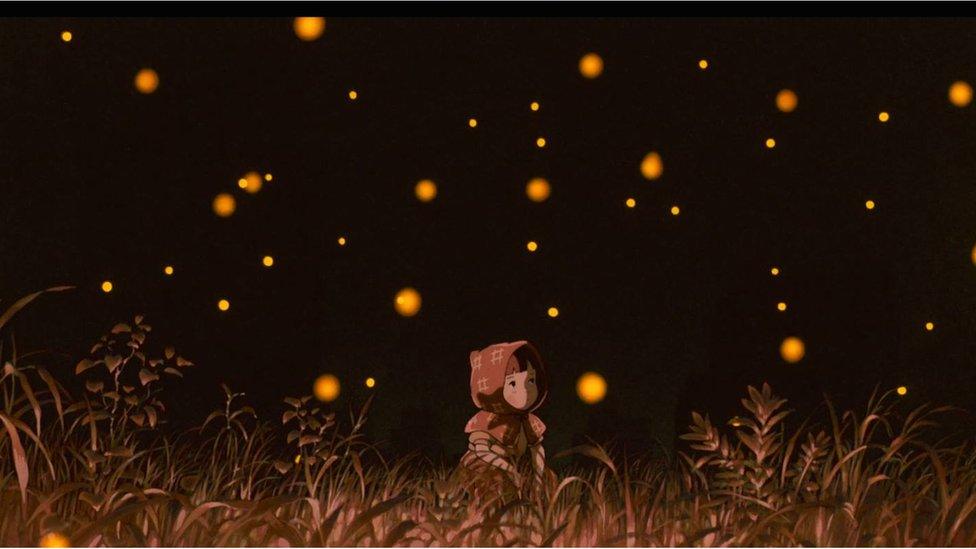
'Why must fireflies die so young?'
Japanese animation giant Studio Ghibli is renowned for light-hearted classics like My Neighbour Totoro but 30 years ago it released Grave of the Fireflies, a war anime with a powerful message that still reverberates.
Based on Akiyuki Nosaka's 1967 novel and directed by the legendary Japanese animator Isao Takahata who died earlier this month, it tells the story of two orphans and their desperate struggle to survive the final months of World War Two.
The show's ending is foreshadowed from the start. All alone, a young boy Seita succumbs to starvation and dies at the Sannomiya Railway Station. Among his possessions discovered by a janitor: a sweet tin containing ashes and some bone fragments. The seemingly innocuous container is discarded in a nearby field, releasing his spirit which rises up and reunites with the ghost of his four-year-old sister Setsuko.
Fireflies surround the siblings and their story begins. "September 21, 1945. That was the day I died," Seita says in a haunting narration.
Grave of the Fireflies may bear the Ghibli name but it is by no means a conventional children's movie. It is harrowing and distinct from its feel-good predecessors, which may have deterred many viewers. But the late film critic and historian Roger Ebert proclaimed it to be "one of the greatest war films ever made".
"Since the earliest days, animated films have been 'cartoons' for children and families," he said in a review, external back in 2000. "But these films exist within safe confines, inspiring tears but not grief. Grave of the Fireflies is an emotional experience so powerful that it forces a rethinking of animation."
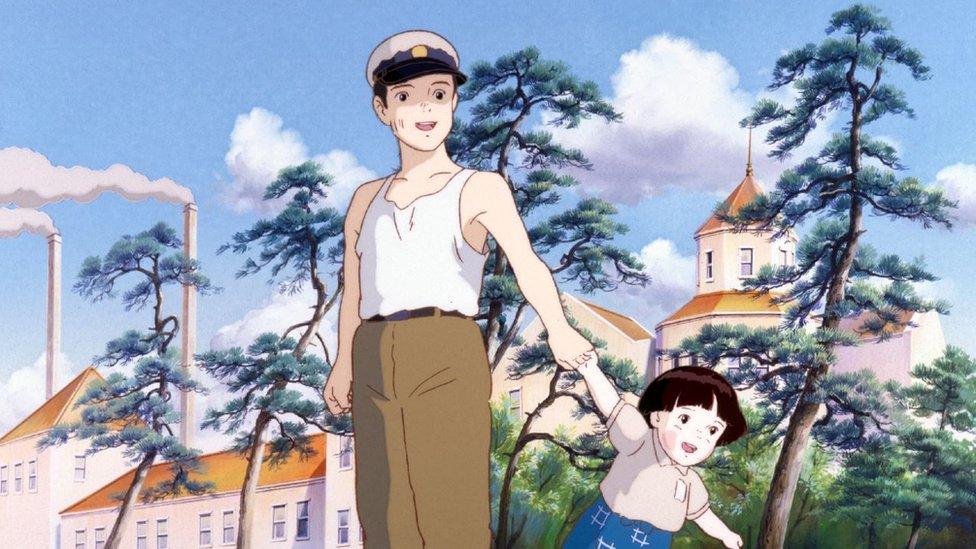
The love between Seita and Setsuko will leave you questioning what war truly means
The anime takes place during the US bombing of Japan, waged in the closing phase of World War Two and which included the firebombing of Kobe city.
With any war, tragedy is inevitable and the strength in the storytelling lies in Takahata's first-hand experiences, having himself survived a devastating air raid on his coastal hometown of Okayama.

In 1945, American B-29 bombers launched a firebombing attack against Kobe
Rich with detail and impressionistic effects, the Studio Ghibli co-founder's masterpiece brings to life the human impact of war.
Roland Kelts, author of Japanamerica, external, remembers a particularly tragic but "mesmerisingly beautiful" scene.
"We see a group of fisherman gazing out over the bay as the city of Kobe goes up in flames on the horizon. The flames lick at the sky and the fishermen are seen from the back," he told BBC News.
"The stillness of disaster. Nothing is moving but we feel their shock. It's a scene of pure shell shock, as gorgeous as it is terrifying."
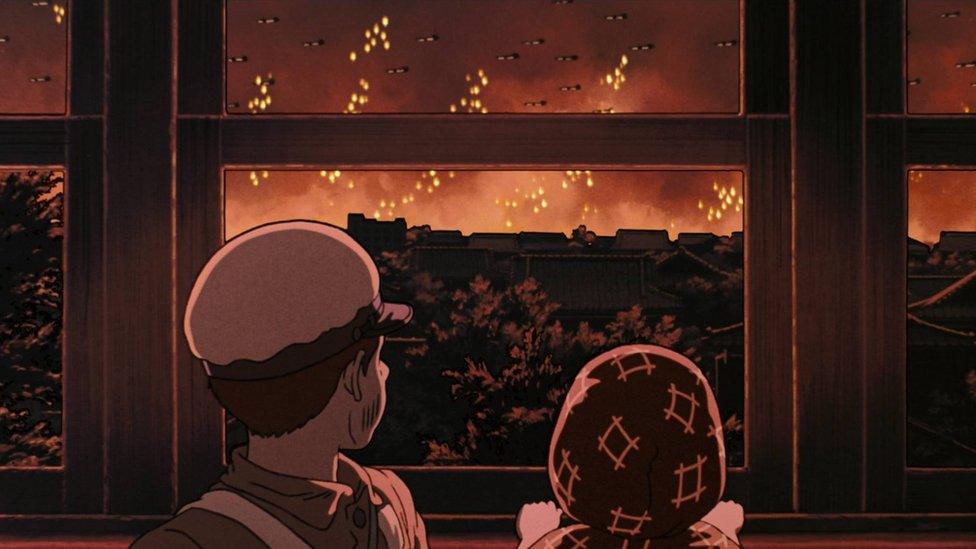
All prospects of a future wither away as the siblings find themselves left behind in a Japan beset by starvation and disease
Surviving war
Today, the film remains not only relevant but more important than ever, according to Lim Beng Choo, an associate professor in Japanese studies.
"Grave of the Fireflies is an important film because it emphasises (among other things) the value of life. While it depicts the irreversible tragedies and sufferings that Japanese people had to endure during the war, viewers should also actively be asking why and how World War Two was allowed to happen," Ms Lim said.
"Knowing Japan's historical military past will also give the audience a better understanding of events and will cultivate a generic humanistic sentiment towards all war, which would prove to be a more effective way of preventing future wars."
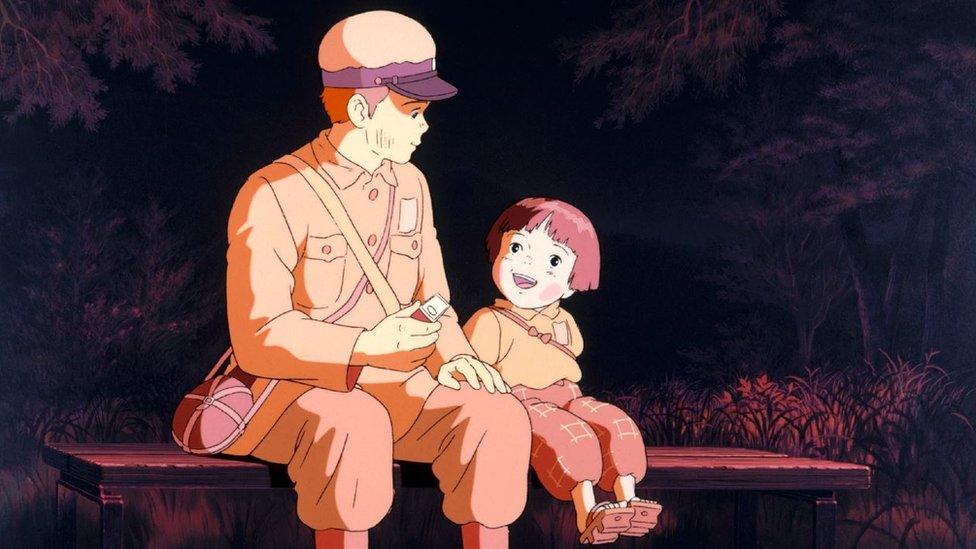
Love simply wasn't enough to protect these orphans
Japanamerica's Roland Kelts added: "Grave of the Fireflies is a story richly told, with all the ambiguity and second-guesses of the way life is lived. Its story remains relevant today because of that fact alone. It tells about the failure of heroism and nobility in desperate circumstances and in that way, it's almost an anti-Hollywood film".
"Hollywood will have you believe that heroes are needed when times are tough. Isao Takahata shows us the humble opposite, that when times are tough what you need most is humility, patience and self-restraint. That's how one survives."

Film critic Roger Ebert said the film "forces a rethinking of animation"
'Icon of hope'
Grave of the Fireflies may have earned a reputation as being one of the darkest Ghibli films ever made. But that has not stopped loyal fans from reviving debate around the "underrated" film and its poignant lessons, with the discussion still vibrant 30 years on from its release. For many, its message about the human impact of war still resonates strongly.
"If anyone thinks anime is only made up of over-the-top facial expressions, a lot of sexual content and corny teen romance, watch Grave of the Fireflies and prepare to be proven 100% wrong," wrote a fan on YouTube.
On Reddit, one anime fan focused on the symbolism of fireflies: "The firefly becomes a haunting symbol of the film as it represents both the deadly fire bombs that wrecked the children's city but as well as an icon of hope and perseverance".
"In the wake of the Trump administration and nationalism capturing the minds of millions around the world, this movie has never been more necessary," said Ghibli fan Rebecca Lee on Facebook, external.
"Know that this movie is a metaphor for World War Two and is so much more than the death of these two characters. Grave of the Fireflies is about the consequences of blind unchecked nationalism and the bitter end of those that follow it. This film is not a masterpiece because it's sad, it's a masterpiece because of the lessons it teaches."
- Published6 April 2018
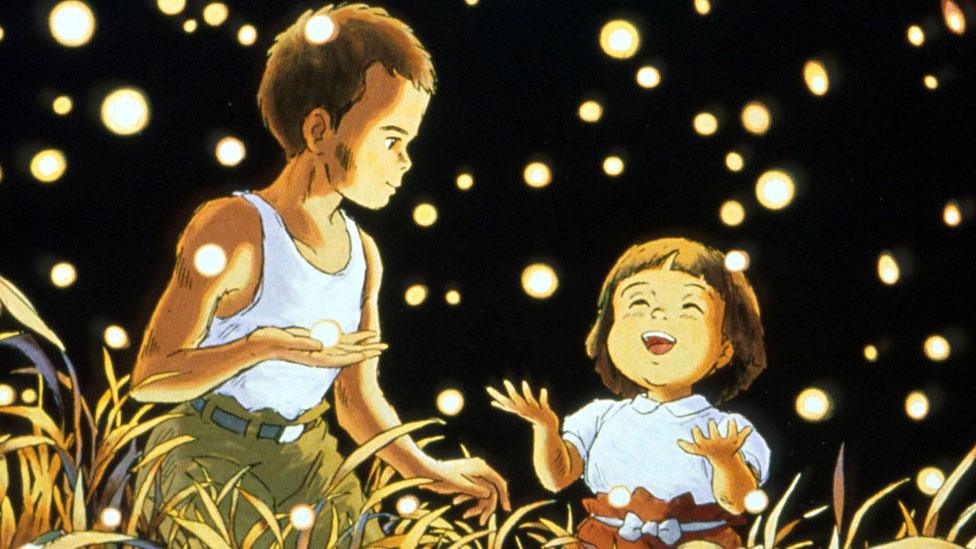
- Published11 April 2018
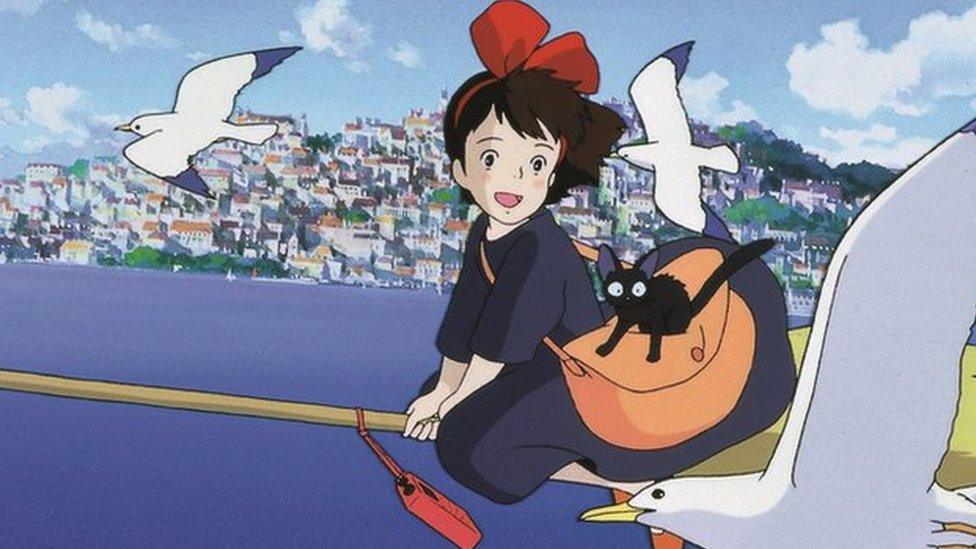
- Published12 October 2016
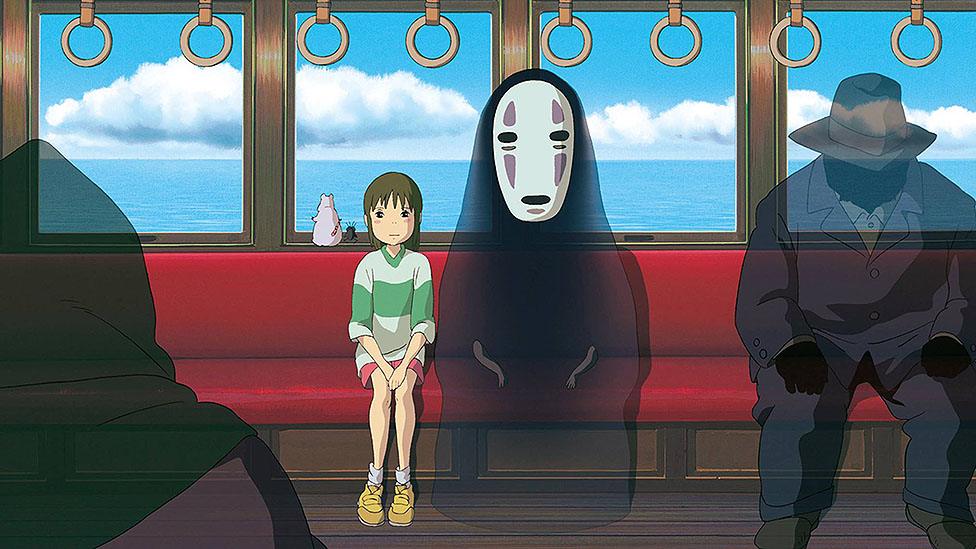
- Published3 December 2016
